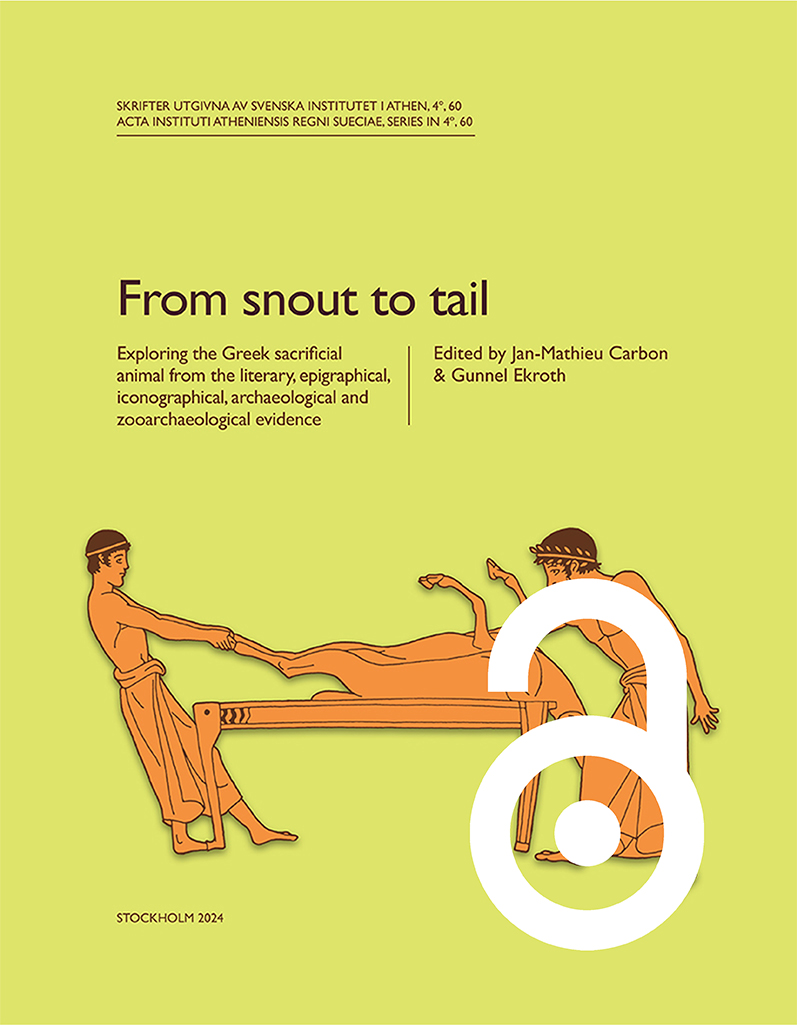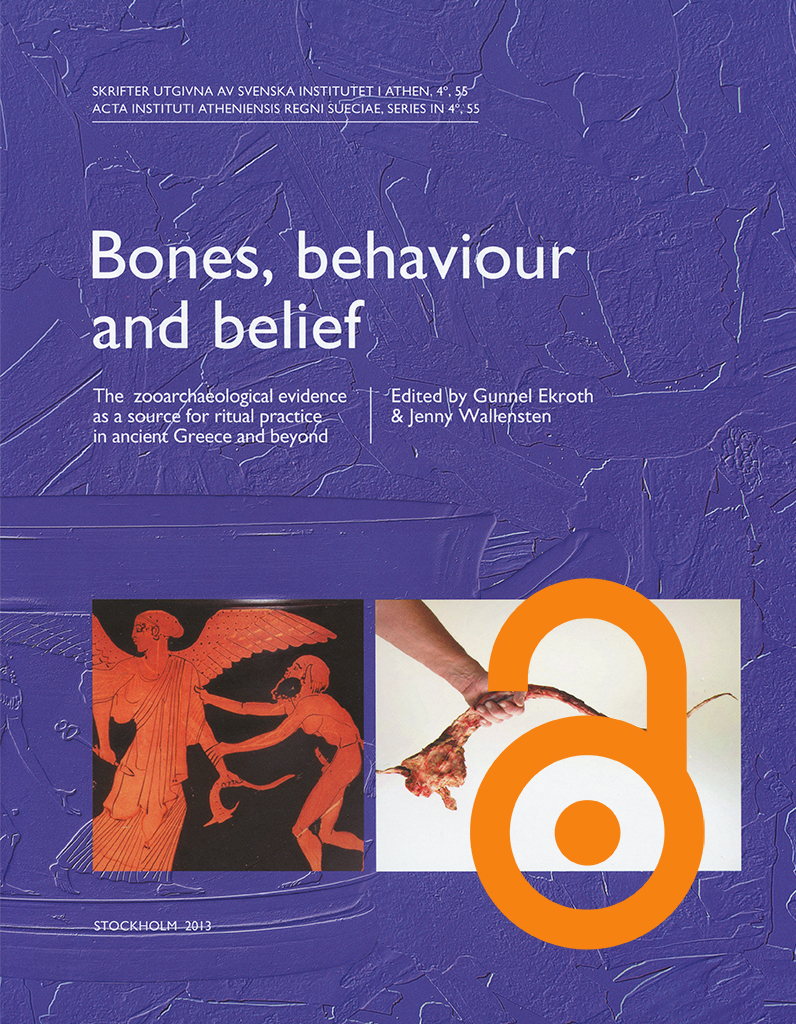Published by the Swedish Institute at Athens. Distributed by Eddy.se AB. All content is available with open access, use links below. From snout to tail. Exploring the Greek sacrificial animal from the literary, epigraphical, iconographical, archaeological, and zooarchaeological evidence Edited by Jan-Mathieu Carbon & Gunnel Ekroth https://doi.org/10.30549/actaath-4-60 Animal sacrifice fundamentally informed how the ancient Greeks defined themselves, their relation to the divine, and the structure of their society. Adopting an explicitly cross-disciplinary perspective, the present volume explores the practical execution and complex meaning of animal sacrifice within ancient Greek religion (c. 1000 BC–AD 200). The objective is twofold. First, to clarify in detail the use and meaning of body parts of the animal within sacrificial ritual. This involves a comprehensive study of ancient Greek terminology in texts and inscriptions, representations on pottery and reliefs, and animal bones found in sanctuaries. Second, to encourage the use and integration of the full spectrum of ancient evidence in the exploration of Greek sacrificial rituals, which is a prerequisite for understanding the complex use and meaning of Greek animal sacrifice. Twelve contributions by experts on the literary, epigraphical, iconographical, archaeological and zooarchaeological evidence for Greek animal sacrifice explore the treatment of legs, including feet and…
Published by the Swedish Institute at Athens. Distributed by Eddy.se AB. All content is available with open access, use links below. Bones, behaviour and belief. The zooarchaeological evidence as a source for ritual practice in ancient Greece and beyond Edited by Gunnel Ekroth & Jenny Wallensten https://doi.org/10.30549/actaath-4-55 Abstract The importance of the zooarchaeological evidence as a source for ritual practices in ancient Greece is gradually becoming widely recognized. Animal bones form the only category of evidence for Greek cult which is constantly significantly increasing, and they can complement and elucidate the information provided by texts, inscriptions and images. This volume brings together sixteen contributions exploring ritual practices and animal bones from different chronological and geographical perspectives, foremost ancient Greece in the historical period, but also in the Bronze Age and as early as the Neolithic period, as well as Anatolia, France and Scandinavia, providing new empirical evidence from a number of major sanctuaries and cult-places. On a methodological level, the complexity of identifying ritual activity from the zooarchaeological evidence is a recurrent theme, as is the prominence of local variation visible in the bone material, suggesting that the written sources and iconography may offer simplified or idealized versions of the…


